I believe that we are our best selves when we give something up. Sometimes that’s being willing to stop arguing with your spouse about where the whisk belongs, and sometimes that’s donating your time or money or lending an ear. I think we are also our best selves when we garden for others, like bees, butterflies, wasps, moths and birds. What we learn from gardening for wildlife can be applied to how we live with our own species. When I see an injured swallowtail butterfly or a skittish mourning dove youngster kicked out of the nest, I see myself, and that can be discomforting — or reassuring.
If you open yourself up to the wildlife garden, you risk your heart, but you learn how to be more alive and present in the moment, and I believe that makes us and the planet a bit healthier. Here are 13 ways you can garden on a different level.
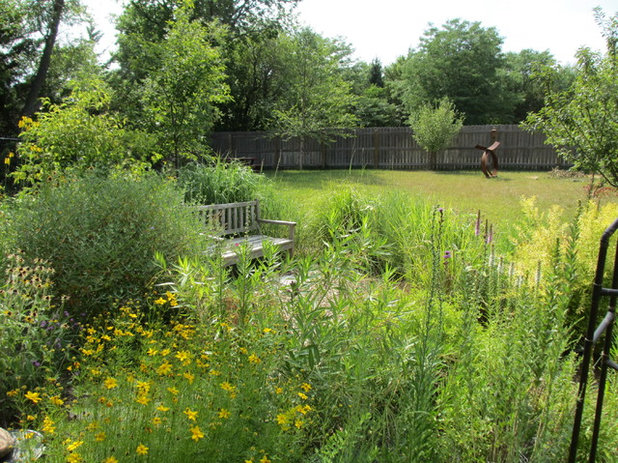
Benjamin Vogt / Monarch Gardens
1. Garden by region, not zone. Gardening for wildlife almost invariably means gardening with native plants, because insects and other wildlife have coevolved with leaves, flower bloom times and berry production times.
So why not garden by zone? Because many of the zones stretch across the entire country — that’s a very long way. A plant native to Nevada isn’t likely to be native to South Carolina. Always garden by region, and even better, by city.
Get ideas for gardening where your live in the Houzz regional garden guides

Neumann Mendro Andrulaitis Architects LLP
2. Think “right plant, right place.” I think weekend gardeners — and maybe all gardeners — get frustrated when they can’t just put a plant anywhere they want. And since plant tags are notoriously vague or even just plain wrong, research is key. Instead of spending years watching a plant die, buying replacements and amending soil, why not just spend 15 minutes online figuring out the best sun, soil and water conditions for plants?
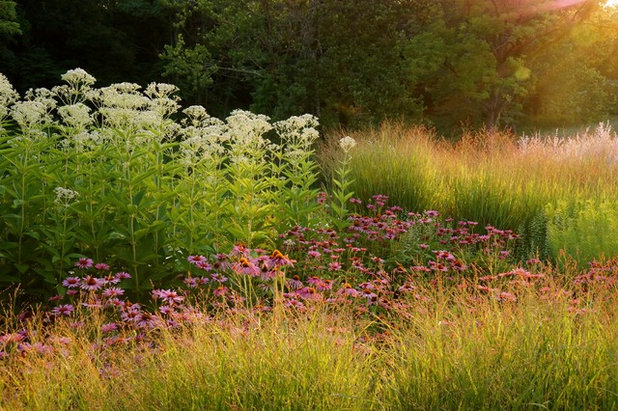
Adam Woodruff + Associates, Garden Artisans
3. Use diverse plants and structure. Welcoming wildlife means providing a varied landscape of trees, shrubs and perennials. Have big flowers and small flowers, purple and yellow and white and red and orange and pink. Have grasses. Have plants with big leaves and have plants with tiny leaves. The more diversity, the more wildlife and the more visual interest for you. Another tip: Plant thickly. Shade the soil to conserve moisture and inhibit weeds, while providing a denser habitat.
Now, all this being said, if you live in a desert environment or a forest, the rules are different. No matter where you garden, learn the local environment and don’t fight it. Embrace it.
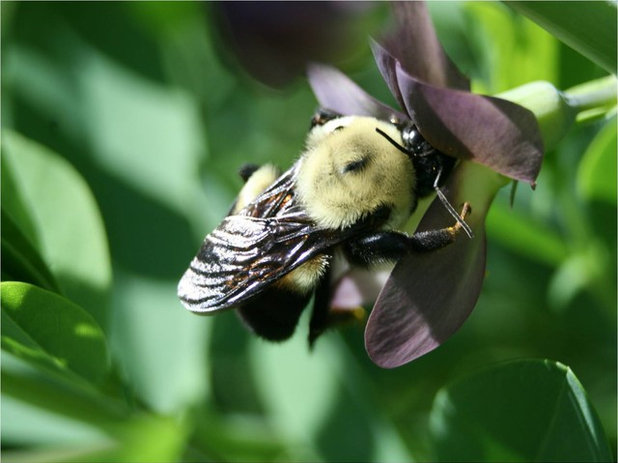
Benjamin Vogt / Monarch Gardens
4. Don’t use chemical sprays or fertilizers. If you get the right native plant in the right place, most of your battle will be won right there. Of course, you’ll have to water to establish the plant, and if you plant in fall or early spring, you’ll have better luck and won’t have to water as much.
But you certainly can’t be spraying stuff all over the place — and your neighbors can’t be, either, even ones a mile away. If you’ve chosen and placed your plants smartly, natural predators will take care of pests and diseases will be mitigated. That being said, learn to see leaf damage as a good sign — leafcutter bees are making nests, larvae are growing into butterflies etc.
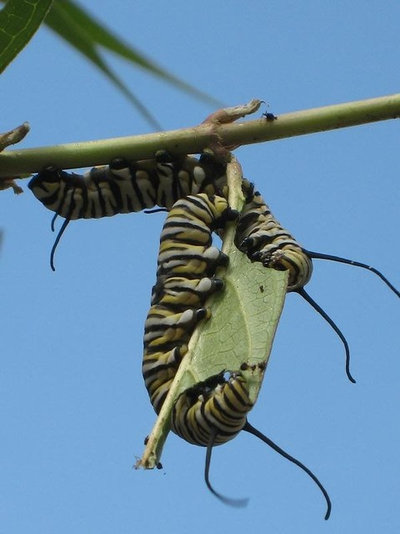
Benjamin Vogt / Monarch Gardens
5. Add host plants for insects. Speaking of larvae, they’ve spent thousands of years adjusting to native plants. Monarchs need milkweed, swallowtails need zizia, sulphurs need baptisia, and on and on.
Without host plants for eggs and caterpillars, you can’t have butterflies and moths. And why should you love
all insects? Because they pollinate 80 percent of the food at the local market and feed 100 percent of songbird chicks. If anything, a wildlife garden should focus on being an insectarium.
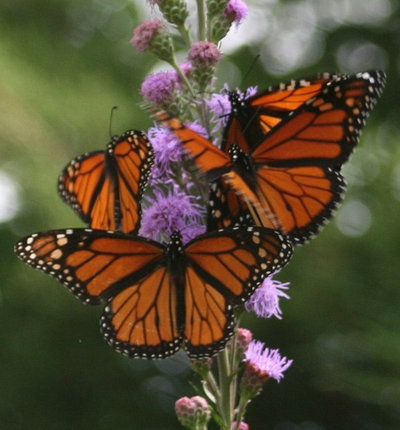
Benjamin Vogt / Monarch Gardens
6. Provide nectar for insects. Once you start gardening with awareness for wildlife, you’ll start to see which insects prefer which nectar plants. I quickly learned that of the 200-plus species in my garden,
Liatris ligulistylis (shown) was monarch nirvana. Deep and tubular flowers attract almost exclusively insects with long tongues — turtlehead, penstemon, baptisia and wild senna come to mind. Flowers with rays, like sunflowers, mountain mint and asters, tend to attract a greater diversity of insects.
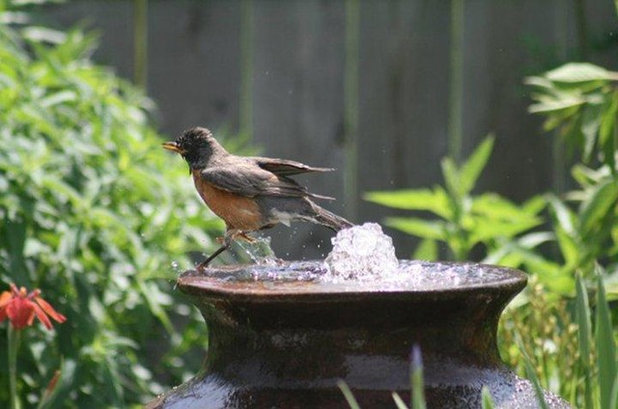
Benjamin Vogt / Monarch Gardens
7. Put out water for birds. Water in summer and water in winter. A lot of birds you just won’t see, even if you have a feeder, but once you put out water, your binoculars will get a workout. I’ve even seen honeybees sipping at water features.
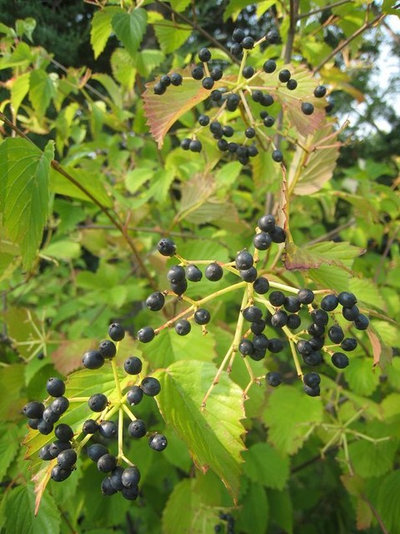
Benjamin Vogt / Monarch Gardens
8. Leave berries for birds. Shown here is
Viburnum dentatum, a native shrub that’s quite drought tolerant. Once the berries turn ripe, they’ll be gone within a day or two. Same for serviceberry, dogwood and elderberry. Crabapples are a decent choice for the winter interest that their red fruit brings, but the treats aren’t edible until they freeze and thaw many times. In spring cedar waxwings clean out crabapples one flock at a time.
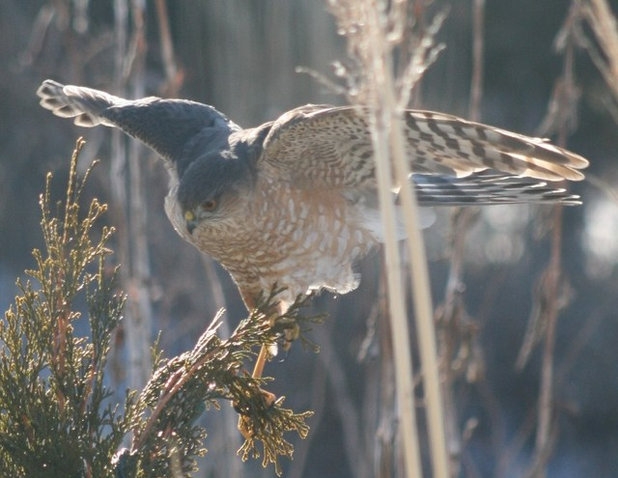
Benjamin Vogt / Monarch Gardens
9. Welcome predators. It’s fantastic if you see death in your garden. Don’t worry, I’m not turning goth on you. Assassin bugs, praying mantises, ladybugs, spiders, hawks — when you see these creatures in abundance, you know you’re cooking.

Adam Woodruff + Associates, Garden Artisans
10. Don’t clean up. I’ve said it before; I’ll say it again: Don’t cut down the fall garden. There is an abundance of life out there. Some of it is hibernating (butterflies, frogs, bees), and some of it is coming to eat flower seed heads, while more is coming to escape a cold wind, snow or predators. Plus, winter gardens are so darn cool looking!
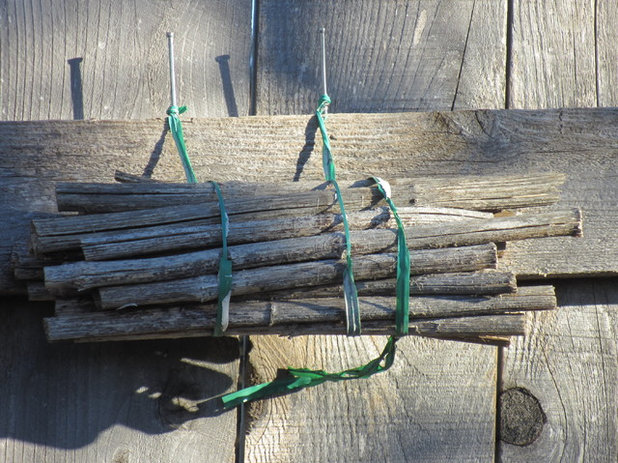
Benjamin Vogt / Monarch Gardens
11. Make shelter for insects. This is a 6-inch bundle of hollow Joe Pye Weed stems I tied to a fence. Inside are overwintering bee and wasp larvae snug in their cells. These insects will be some of the first to come out in spring and provide early-blooming flowers with pollination; some of those early bloomers, like Viburnum, are key berry plants for birds during their late-summer and early-fall migrations.
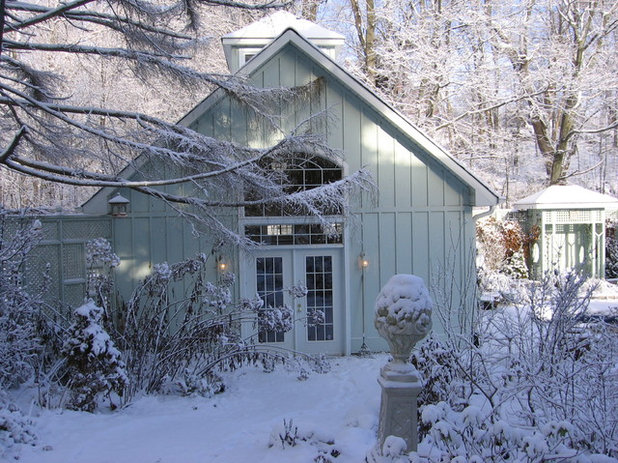
David Chestnutt
12. Love all four seasons. Each has its charms and necessities, and each provides different support for wildlife and your plants. If you can fully appreciate the subtleties of a changing landscape, you’ll be more at peace and aware of how nature functions; I believe this is one of the most profound aspects of gardening for wildlife. In each season sit down on the ground and watch, listen, feel. See how that bee moves from bloom to bloom, how birds use dead stems as perches as they search for larvae inside, how snow settles on a coneflower. Do you ever just listen to snow? It’s like a heartbeat.
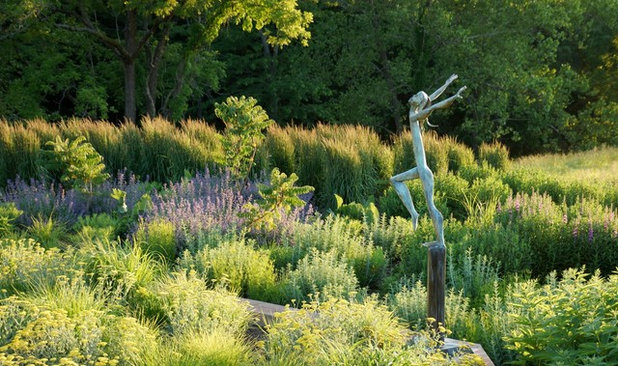
Adam Woodruff + Associates, Garden Artisans
13. Let the garden be free. You’ve created a wildlife habitat, so let the plants and the wildlife be who they are. I have to admit I fought with my fair share of baby bunnies, but once the garden thickened, I saw few of them eating plants I didn’t want them to destroy. Perhaps the plant diversity is teasing them to another food source, or perhaps predators are in play; either way, the point is to have patience and give the garden time to shake out and grow up.
Tell us: What moments have you had in the garden where you see yourself? Was it through the actions of another creature, a flower, the wind through some bluestem?





